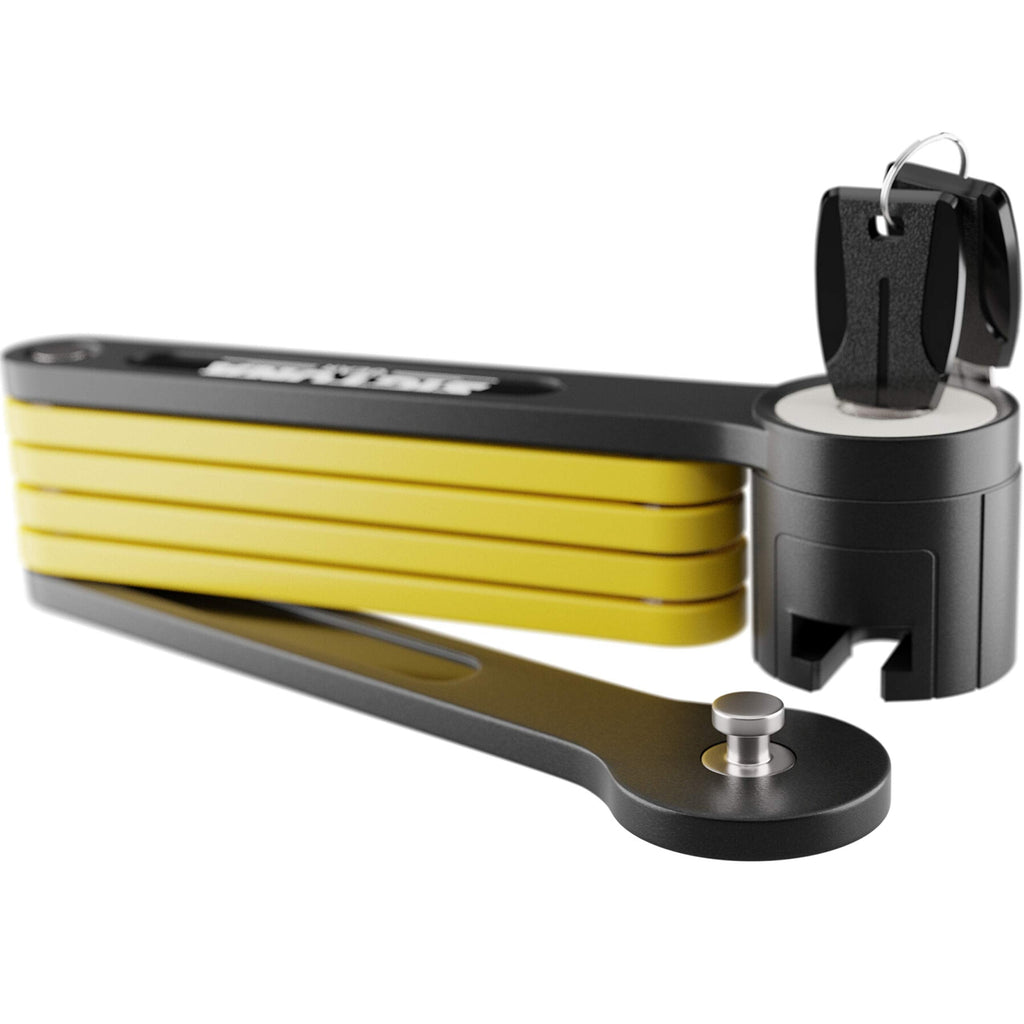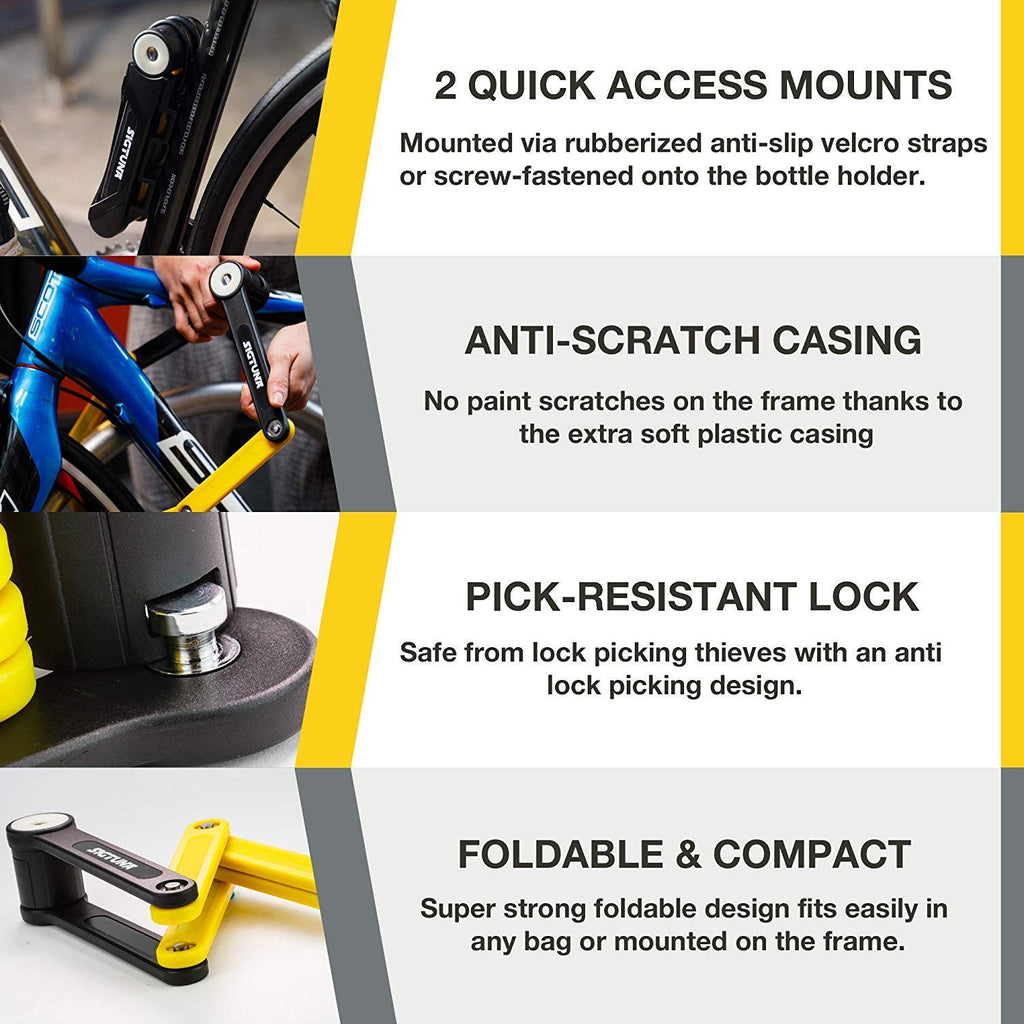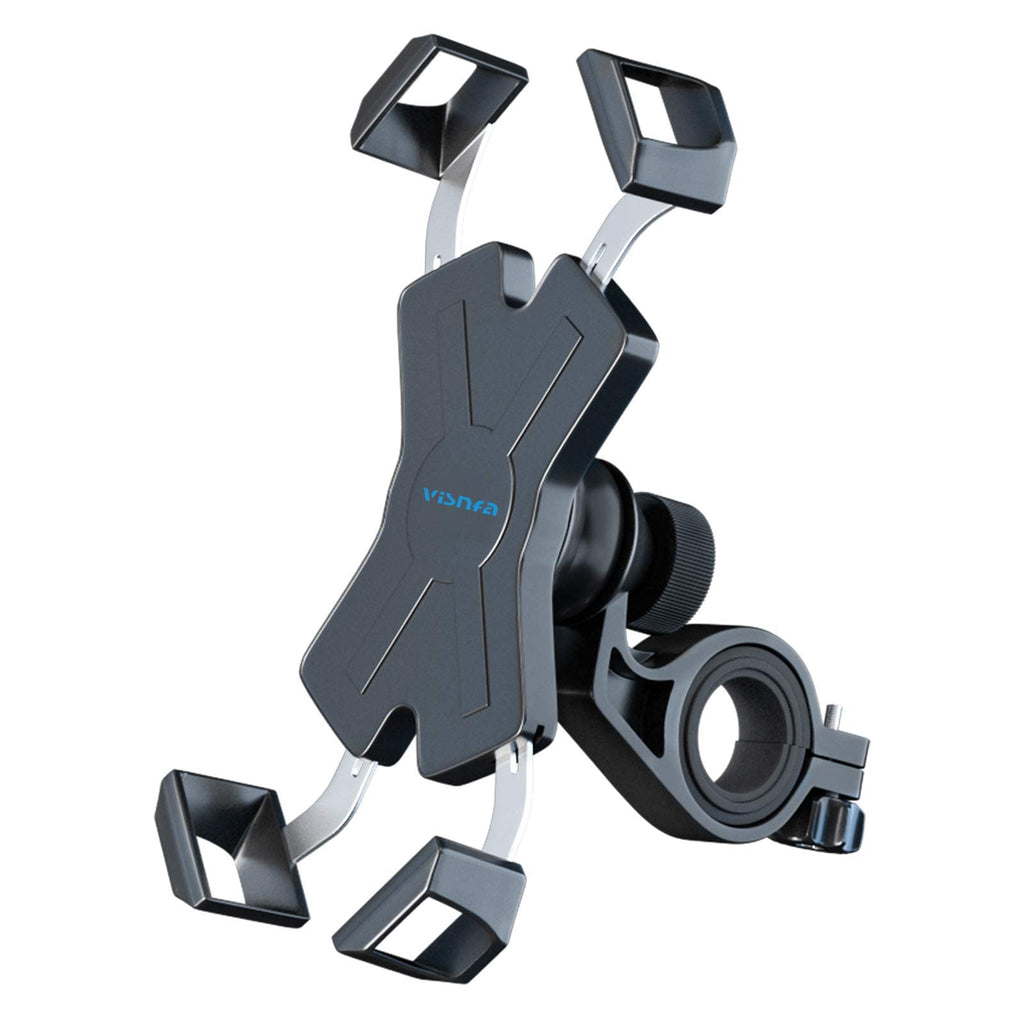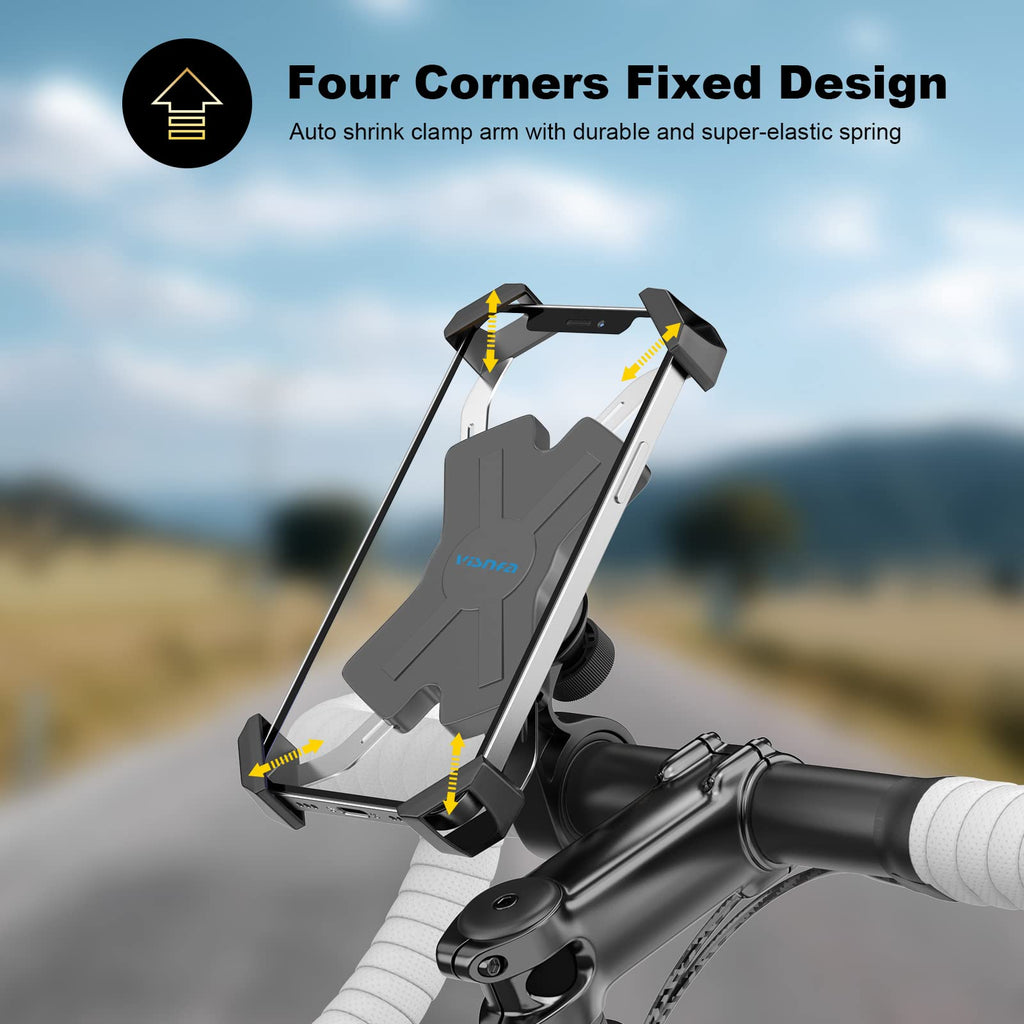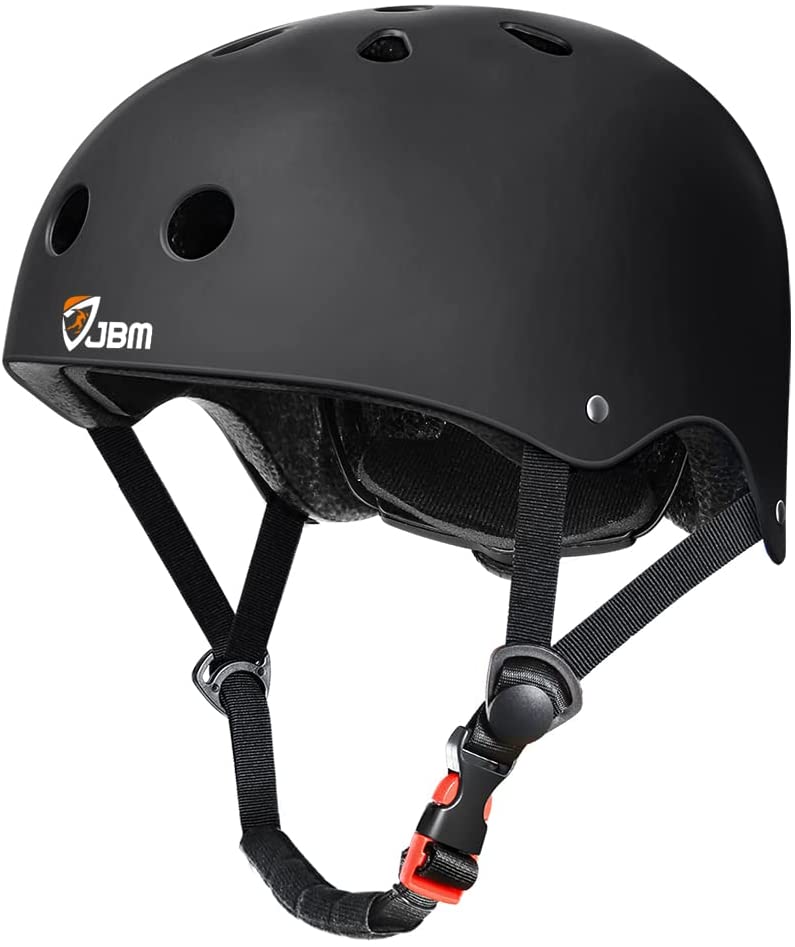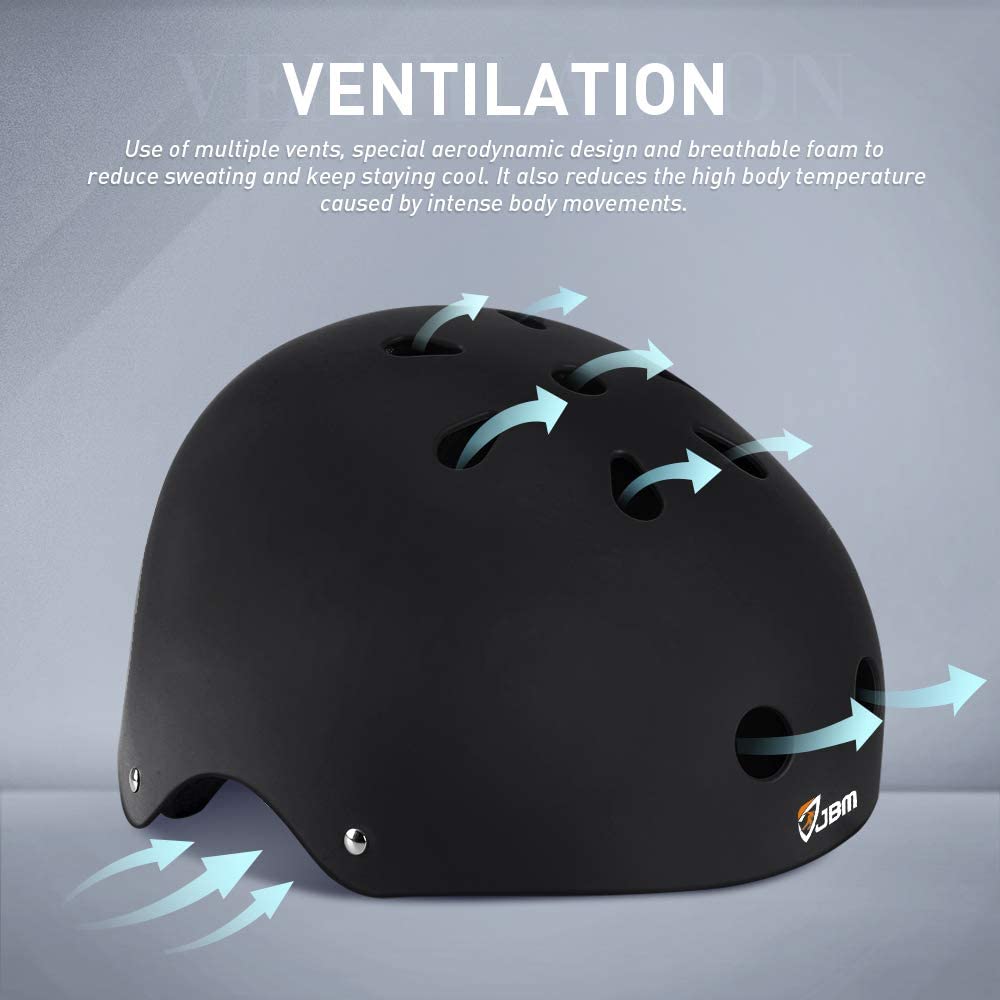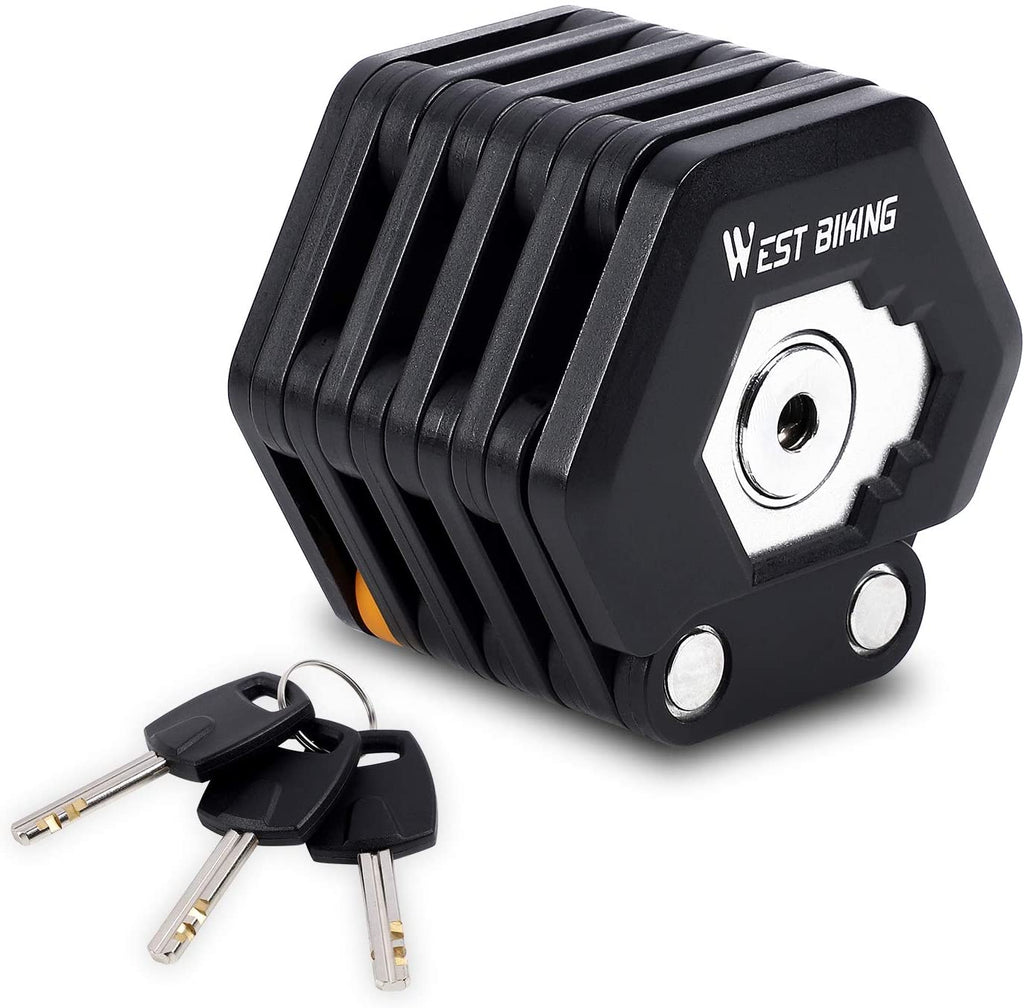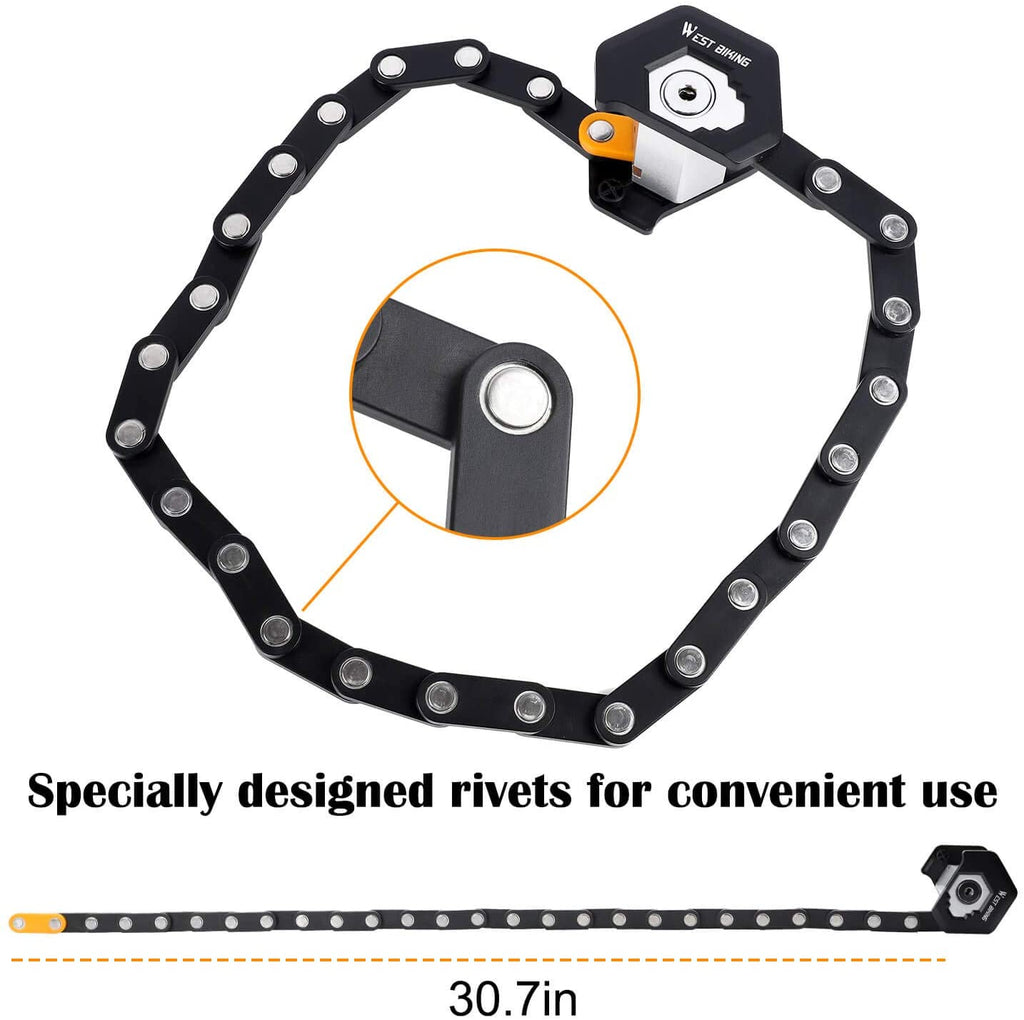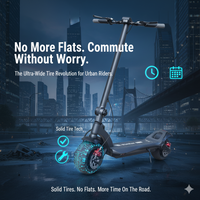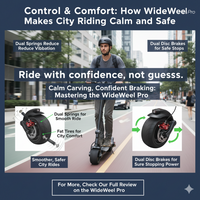Control & Comfort: How WideWheel Pro Makes City Riding Calm and Safe
Ride with confidence, not guesses
City streets speak, lanes surprise, and a hard stop can come out of nowhere. If your scooter makes every pothole and paint stripe feel like a hazard, you’re riding uncertainty, not the city. The fat tires WideWheel Pro is designed to replace that uncertainty with repeatable comfort and sure stopping: dual springs that calm chatter and dual disc brakes that stop when you need them.
For deep dive information, you need to explore the pillar page: WideWheel Pro Review: No-Flat City Carver, Real-World range

Calm Carving, Confident Braking: Mastering the WideWheel Pro
Dual Springs, Smoother Streets: WideWheel Pro Ride Feel
1) From chatter to smooth: the problem and the payoff
At typical city speeds 20–26 mph, many solid-wheel scooters transmit high-frequency vibration to the bars and deck. Research on e-scooter vibration shows that vibration becomes uncomfortable above 10 mph on even good pavement, and can be harmful nearer 14 mph on rougher sections.
Proper suspension reduces that exposure and keeps riders in control. The WideWheel Pro’s dual-spring setup plus ultra-wide tires is deliberately tuned to reduce felt vibration and improve control at city pace, trading a bit of plushness for far better composure and less arm fatigue over a commute.
2) Spring basics: what dual springs do, in plain terms
- Energy absorption: Each spring compresses under impact, absorbing energy that would otherwise transmit to your hands.
- Rate tuning: The Pro’s springs are matched to its wider tires and average rider weight range so the system compresses gradually rather than bottoming out.
- Rebound control: Proper spring rebound prevents the scooter from bucking after each hit. It helps to keep the deck steady for follow-on inputs like steer, brake, or acceleration.
Suspension systems on e-scooters have been shown to reduce perceived vibration and discomfort by measurable margins; field studies suggest effective dampers/springs can reduce harmful vibration exposure by 20–40% versus non-suspended designs at common urban speeds.
3) Maintenance: Keep the springs working like day one
- Monthly: Check spring mounts, swing-arm bolts, and fasteners for correct torque. Vibration loosens hardware faster than a plush pneumatic setup.
- Quarterly: Inspect spring condition and eyelets for wear or corrosion; replace if sagging or if travel feels diminished.
- Annually: Do a full suspension check pivot bearings, bushings, and fasteners or have a shop inspect if you ride heavily.
Why it matters: Loose or worn springs reduce travel, increase harshness, and shift loads to the frame, undoing the comfort advantage.
4) Setup tips: Quick tweaks that give big gains
- Preload: With the scooter on the ground and you standing normally, you want 20–30% sag about ¼ travel. Too little sag = harsh; too much = wallow.
- Stance: Stagger your feet one forward, one back and keep knees soft, the rider body becomes a secondary damper.
- Bar input: Guide with small, deliberate steering inputs. The Wide Wheel Pro is designed to carve with measured inputs, not aggressive flicks.
- Weight & loads: Heavier riders should increase preload slightly and re-check spring mounts monthly.
5) Rough-road limits: When suspension can’t save you
Dual springs dramatically improve comfort and control, but they don’t make the scooter invincible. Slow down and walk the scooter over:
- very deep potholes; risk of wheel/frame damage
- loose gravel cause risk of slip
- large dropped curbs deliver risk of structural shock.
If you hit a severe impact, stop and inspect fasteners, fork/swing-arm mounts, and wheels before continuing.
Stopping Sure: Dual Disc Brakes on WideWheel Pro
1) Why dual discs, the engineering rationale
Dual disc brakes, one on each wheel deliver two practical advantages for urban riders:
- Distributed stopping force: Front and rear work together so a hard stop doesn’t overload a single wheel or cause unpredictable weight transfer. That’s especially important on a heavier, planted scooter like the Wide Wheel Pro.
- Heat management & repeatability: Two discs shed heat faster across repeated city stops lights, intersections, preserving pad bite and avoiding fade.
Studies of braking systems and real-world tests consistently show better repeatable performance when braking forces are shared and heat is managed.
2) Lever feel: What good brakes should communicate
- Linear modulation: You should feel consistent, progressive resistance through the lever not an on/off grab. That gives you the ability to apply 20–80% of braking force precisely.
- Short travel: Minimal wasted lever travel means the pads engage quickly; excessive travel suggests pad wear, cable stretch, or adjustment needs.
- Two-handed balance: Use both brakes proportionally: rear to stabilize, front for primary stopping; combined use shortens stopping distance and keeps chassis balanced.
3) Example stops: Expected distances for dry asphalt, typical rider 75–85 kg
These are conservative, real-world benchmark estimates to help you plan and practice. Actual distances vary with speed, rider mass, surface, and pad condition.
| Speed | Expected stopping distance (Dual disc, WideWheel Pro) |
|---|---|
| 15 mph (24 km/h) | 5–6 m (16–20 ft) |
| 20 mph (32 km/h) | 8–10 m (26–33 ft) |
| 25 mph (40 km/h) | 14–16 m (46–52 ft) |
4) Pad care: Small attention, big safety payoff
- Bed-in: 10–15 medium stops after pad replacement = consistent initial bite.
- Inspect every 300–500 miles or monthly for heavy stop-and-go: pad thickness is always greater than 1.5 mm; replace if below.
- Keep rotors clean: Oil or dirt increases stopping distance and can glaze pads, a wipe with isopropyl prevents contamination.
- Replace in pairs: Always change pads on both sides of an axle to preserve balance.
5) Wet-road precautions: Braking in the real world
- Water reduces friction dramatically; assume stopping distances double on very wet, oily, or painted surfaces compared with dry asphalt. Slow earlier and modulate brakes smoothly to avoid skids.
Modern disc systems keep a more predictable feel when wet than rim brakes, but physics still apply to give yourself extra space and time.
